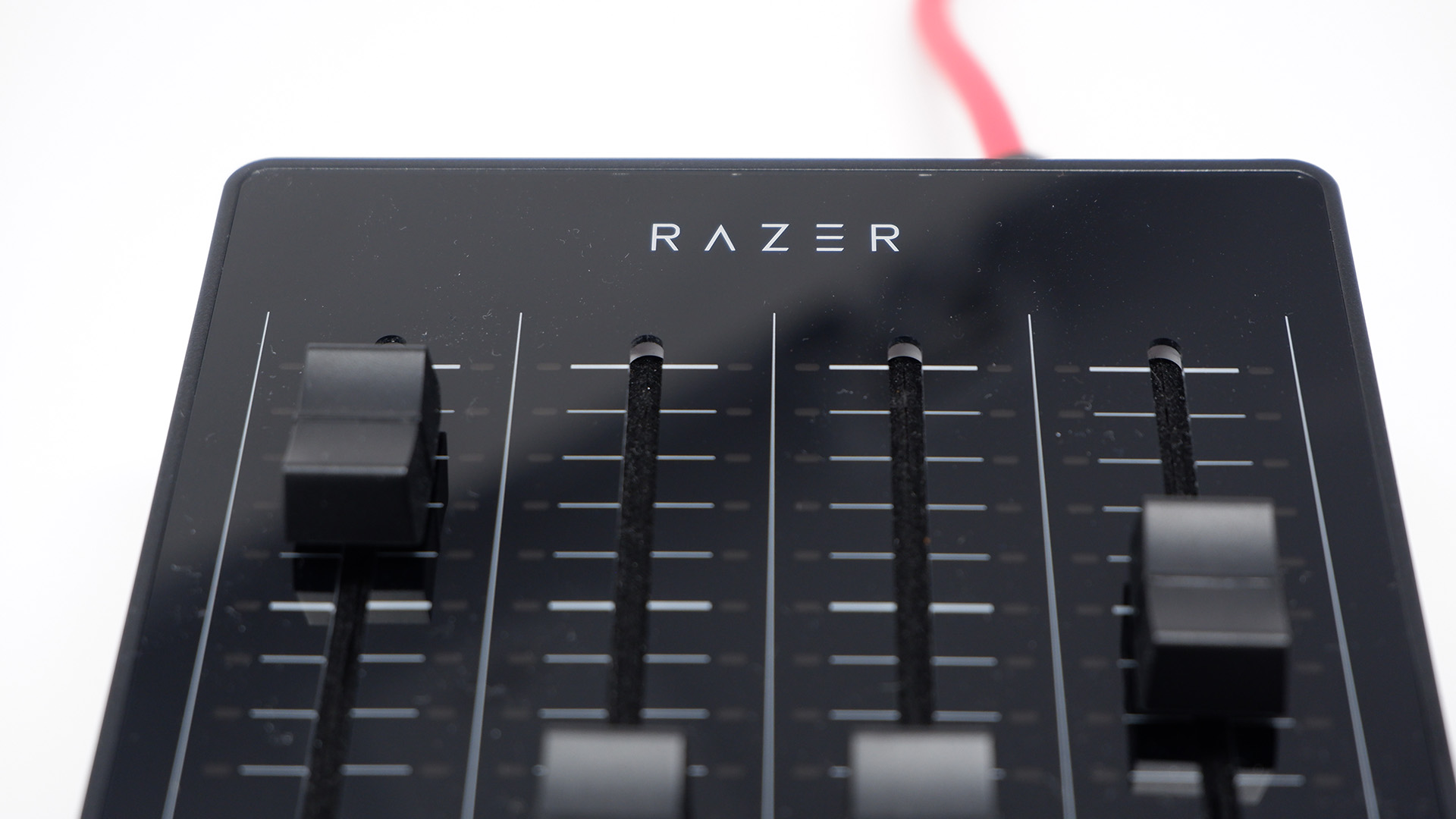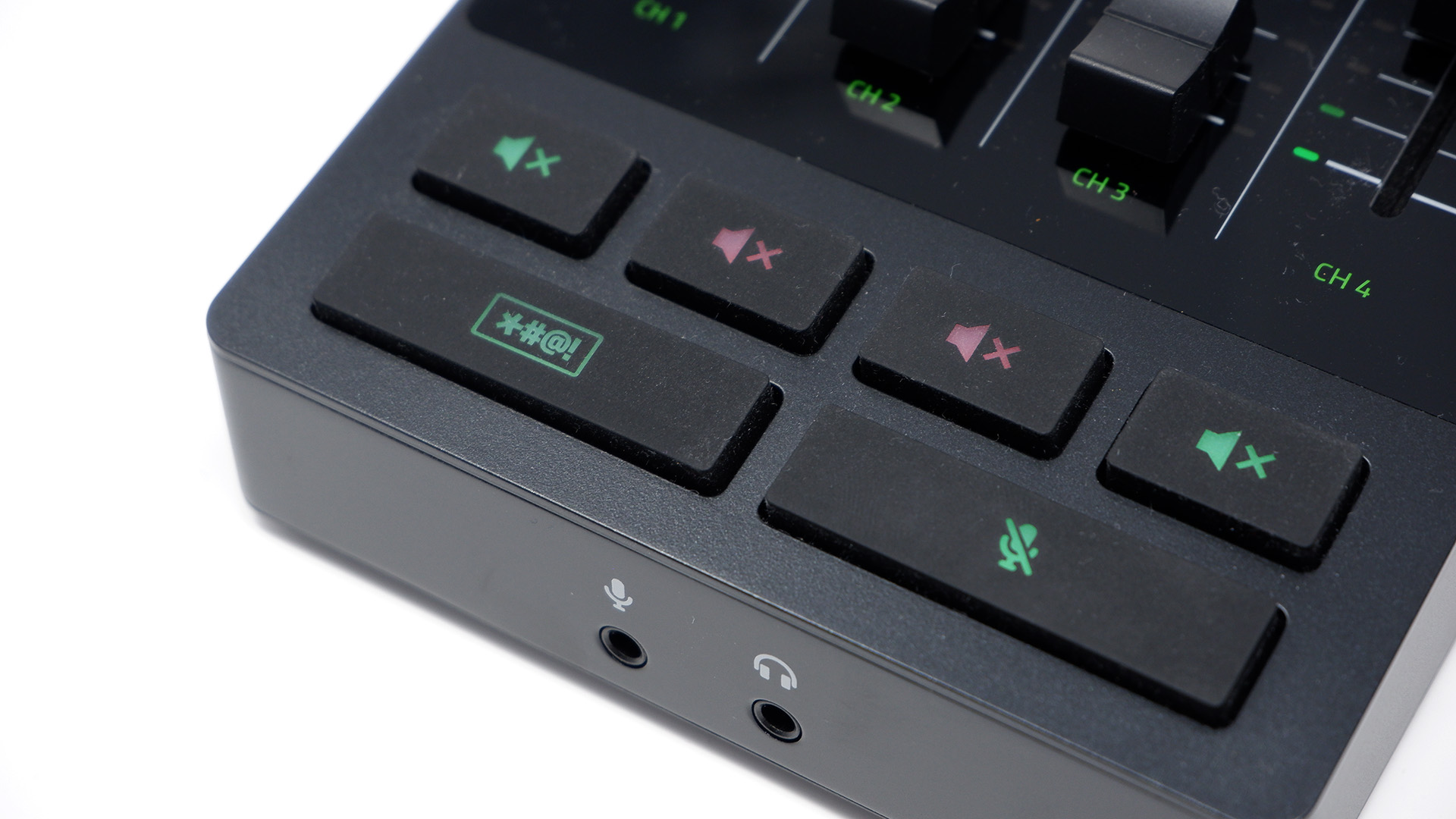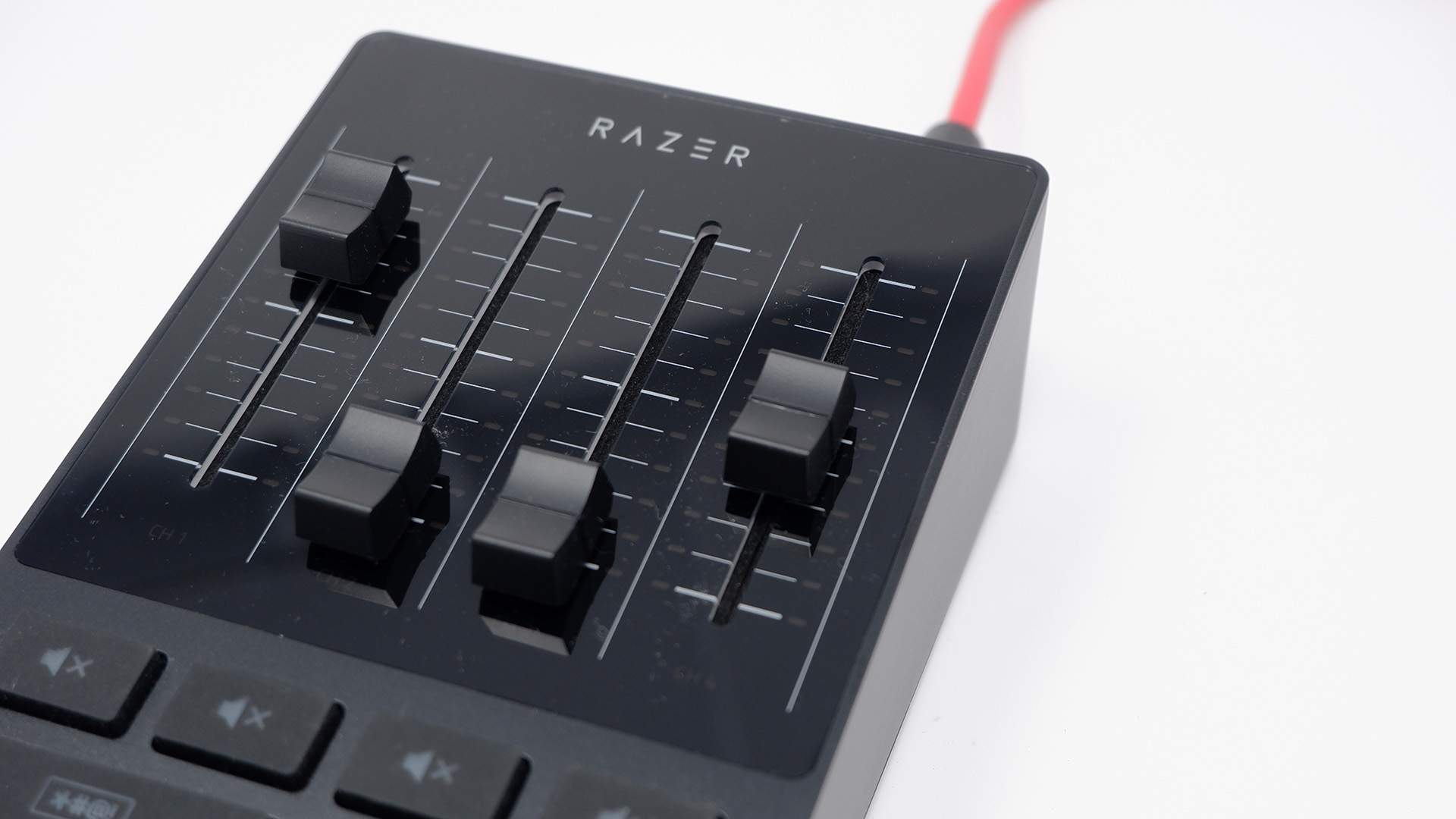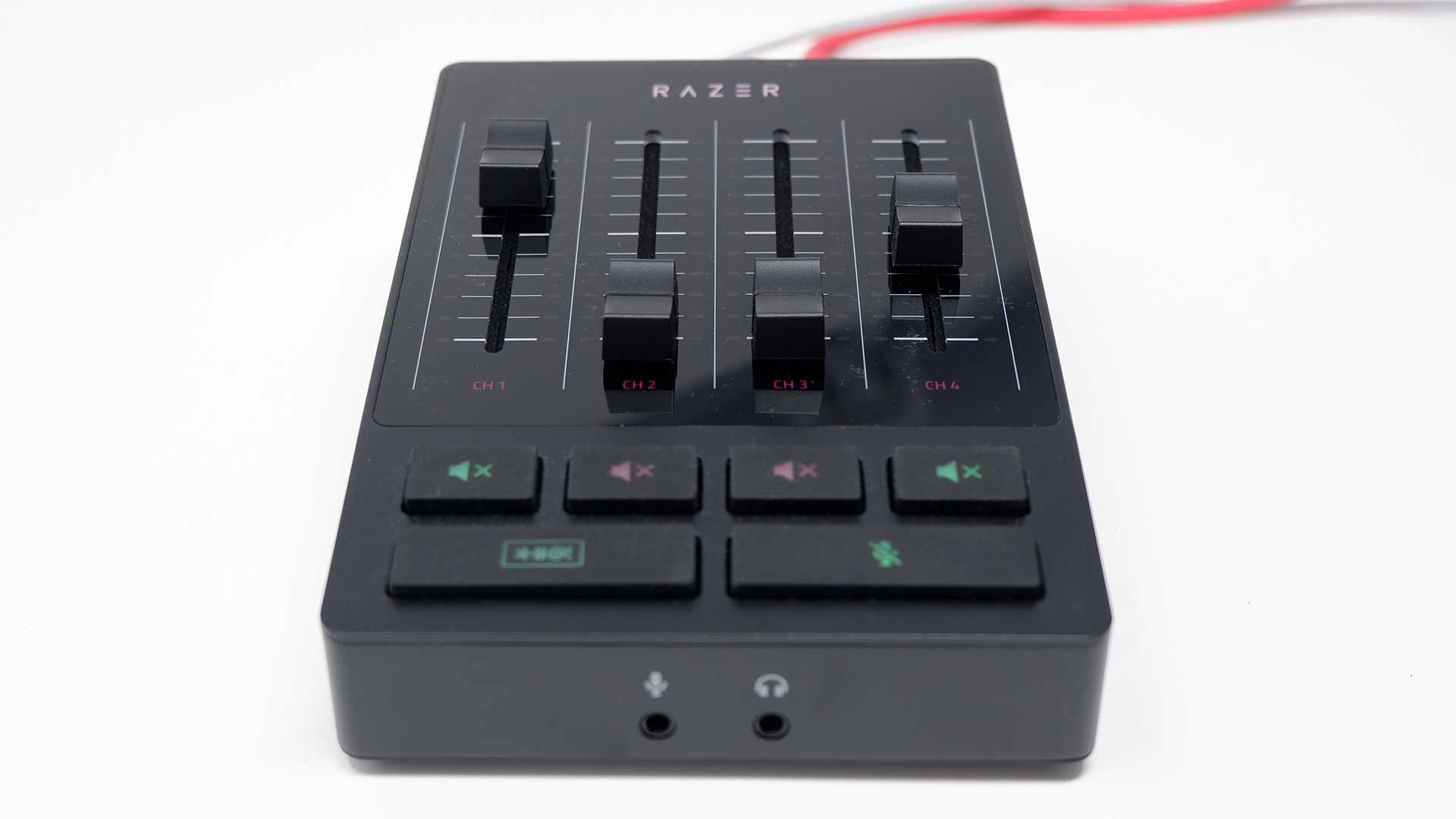Our Verdict
If you want to take the pain out of digitally mixing your stream's audio, this is a easy and accessible way to do it. But it's a lot to pay for an accessory whose functions can be imitated by software or cheaper hardware if you're prepared to learn.
For
- Makes audio mixing easy
- All your audio settings under one roof
- Solid XLR mic controls
- Lots of connectivity options
- Simple setup
Against
- Isn't the loudest
- Expensive
PC Gamer's got your back
If you've ever tried to mix audio digitally you'll know it can be an absolute nightmare. It's achievable to set up a working streaming setup with nothing more than a mic, some software and a dream, but be prepared to have to sacrifice easy-to-use sound settings on your PC to get it done. The other option is an external mixing device, like this Razer Audio Mixer.
The whole point of any mixer is to keep your incoming and outgoing sound levels in harmony. Whether you're a streamer, recording video, or even want to record some music of your own, the Razer Audio Mixer delivers this functionality well and in a surprisingly easy-to-use package.
There are many mixers on the market, and the Razer Audio Mixer is a lot like one of the most popular today, the GoXLR Mini. I've used both before, and they share a relatively similar shape, button layout, and connectivity. They're a match in most ways, bar software support. The Razer Audio Mixer is controllable via Razer's Synapse app, which offers output mixing, routing, and mixing for a range of inputs.
From the app you can choose which audio sources to map to the four fader slide controls on the Audio Mixer itself. By default, you've got Mic, Game, Chat, and Music. If you set Windows up to use each of these channels properly, you can use them to balance your whole PC's audio with these hardware controls alone. That's pretty neat if you're tired of fiddling with Discord and in-game volume controls for every game or friend you're playing with regularly.

Dimensions: 155 mm x 115 mm x 55.3 mm
Controls: 4 x Channel Volume Slide Faders, 4 x Channel Mute Buttons, 1 x Microphone Mute Button, 1 x Bleep Button, 1 x 48V Phantom Power Button
Connections: Hybrid XLR and 6.35mm port, 3.5mm Line In port, 3.5mm Line Out port, 3.5mm Headphone Out port. 3.5mm Microphone In port, 1 x USB-C, 1 x Optical Audio Cable
Frequency Response: 10 Hz–20 kHz
Weight: 468 g without cable
MSRP: $250/£250
That's a handy feature to have, but the appeal here is having independent mixes while on stream. That means one mix for your own headphones versus another for your stream or recording software. The Razer software divides these up as Playback Mix and Stream Mix, to make things easy, and they work a treat. If you don't want a particular audio source beaming out to your followers or your own microphone mix through your headset, just flip the switch to turn them off for each mix.
This isn't revolutionary stuff for a mixer, but the Razer does offer the functionality in a pretty easy way to get your head around. Half an hour in the app fiddling with things and you'll likely know all you need to get going with better balanced audio.
You can plug in both a single XLR microphone and a 3.5mm line into the Audio Mixer, though you can only select one at a time in the app. From here, you can enable 48V phantom power for mics that require the extra juice, or enable and disable a mic monitor. There are also nifty noise gate, equaliser, and compressor features, which saves the extra setup in apps like OBS Studio.

And, yep, there are some fun microphone effects to pick from. Though there's only four and honestly the shine of these sorts of gag effects has long been lost on me.
Being a Razer product there's heaps of RGB lighting to control on this thing. The logo, faders, channels, and buttons all light up all manner of colour and can be tweaked to act differently when muted, respond to volume, whatever you fancy.
There are a few sacrifices I've had to make for the Razer Audio Mixer though, and they're worth bearing in mind. I use a pair of audiophile headphones, and the Razer Audio Mixer doesn't support the 1⁄4 inch audio jack to drive them. So it's back to a more mundane pair of headphones that came with the Scarlett mic I've been using with the Razer unit. Also you need to hook your headphones up to the mixer, so if you're rocking a pair of wireless cans you'll need to pack them away for a pair with a cable.
The Razer Audio Mixer also doesn't drive the loudest output audio I've experienced, and there's no specificity as to the specs of the chipset driving the whole mixer, which feels like this is simply the maximum oomph this amp can deliver.
Neither of those negatives are likely news to you if you're looking into an audio mixer like this, but that leads me into how I feel about the target audience for a mixer like this. You need to have a pretty good reason to pick one up to actually get good use out of it, otherwise it can become a bit of an unnecessary addition to your desktop.

Which all brings me to the elephant in the room: the Razer Audio Mixer's price tag. Razer asks for $250/£250 for the Razer Audio Mixer, but it goes for more like $216 now. That's roughly the same as the going price for a GoXLR Mini in the US, but pricier than you'll find one for in the UK. It's also a significant chunk more than the Focusrite Scarlett 2i2 3rd Gen audio interface I reviewed last year. Although these are slightly different beasts due to the Focusrite's more manual approach to external mixing and its musical background, you can get a similar job done with an XLR mic on it if you're willing to learn how to navigate an external interface.
But I started by saying that digital mixing can be a nightmare, and there's no doubt that the Razer Audio Mixer makes life a lot easier in that regard. The Razer Audio Mixer does everything I want it to and is surprisingly simple to set-up. If you're already in the Razer ecosystem then I can see the appeal of plugging this device in and having it all load up automatically into the Synapse app you might already be using in your day-to-day. All I'd say is, at this price, you have to be absolutely sure you're committed to using this mixer often to justify the cost.
If you want to take the pain out of digitally mixing your stream's audio, this is a easy and accessible way to do it. But it's a lot to pay for an accessory whose functions can be imitated by software or cheaper hardware if you're prepared to learn.

Jacob earned his first byline writing for his own tech blog. From there, he graduated to professionally breaking things as hardware writer at PCGamesN, and would go on to run the team as hardware editor. He joined PC Gamer's top staff as senior hardware editor before becoming managing editor of the hardware team, and you'll now find him reporting on the latest developments in the technology and gaming industries and testing the newest PC components.


